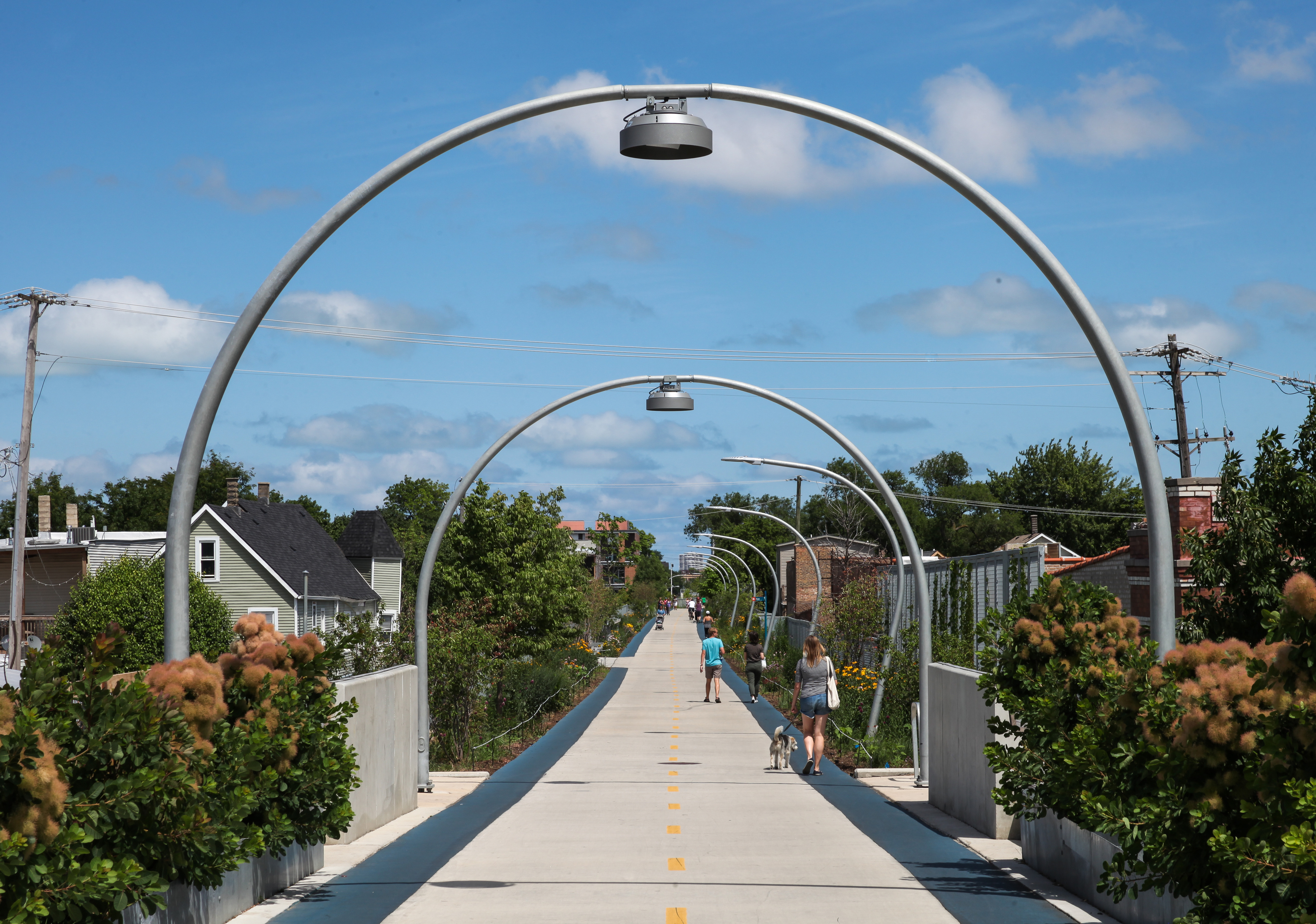Could Greenways Help Fight Chicago Crime?

An in-depth study of Chicago neighborhoods in 2011 and 2015 suggests that parks and greenways could play a role in reducing crime. During that time, crime of all types decreased at a faster rate in neighborhoods along Chicago’s 2.7-mile Bloomingdale Trail – better known as The 606 – than in similar neighborhoods, according to research published in Environment and Behavior.
The new elevated greenway, built on an abandoned railway line northwest of downtown, connects diverse neighborhoods. University researchers from Clemson and North Carolina State drew on census data to find Chicago neighborhoods that shared similar socioeconomic characteristics with neighborhoods along The 606. Using City of Chicago crime statistics, researchers compared crime rates for June-November 2011, before the greenway opened, with rates for the same period in 2015, the trail’s first year of operation.
“Rates of violent, property and disorderly crime all fell at a faster rate in neighborhoods along The 606 than in similar neighborhoods nearby,” said lead author Brandon Harris, a Chicago resident and former city Park District intern who chose The 606 for his dissertation research at Clemson. “The decrease was largest in lower-income neighborhoods along the western part of the trail.”
Several factors could have contributed to a greater drop in crime along The 606 over the four-year period, said co-author Lincoln Larson, an NC State faculty member who has previously studied greenway use in urban Atlanta and suburban San Antonio.
“We know that having a well-designed greenway can increase residential and commercial activity, bringing in more foot traffic that pushes out crime in the neighborhood,” Larson said. “People along the trail may also be having more positive interactions and feeling a greater sense of community among neighborhoods, which prompts them to take ownership in the trail.”
After looking at crime patterns on a city scale, researchers zoomed in on crime rates within walking distance – a half-mile – of The 606. Their analysis showed that property crime decreased at a faster rate in neighborhoods closest to the trail, said co-author Scott Ogletree, a Clemson graduate student. There were no significant differences in rates of violent or disorderly crimes.
Ogletree noted that the city invested in lighting, installed security cameras, increased police presence and added access points along the trail, which tourism officials promoted as a “must-see” destination for visitors.
Before a recent uptick, Chicago crime rates had been falling in many neighborhoods. Could investments in park-based urban revitalization be part of a long-term solution?
“A growing body of evidence suggests that’s true, but there are a few counter-examples,” Larson said, adding that keeping the trail in good condition is vital to prevent crime. “It’s not just the presence of parks that matters,” he said. “Design and programming for parks is also critical, especially considering some of the troubling crime trends in Chicago over the past year.”
Harris said one example of quality neighborhood programming is The 606 Moves, a dance workshop offered in pocket parks along the trail with support from the city.
Officials must also consider how revitalization and increased development affect residents, said Harris, who is doing follow-up research on those issues. “Cities must be very careful when constructing a trail through a minority enclave. Revitalized spaces can be transformative, but they must be inclusive, safe and welcoming to all parties.”


